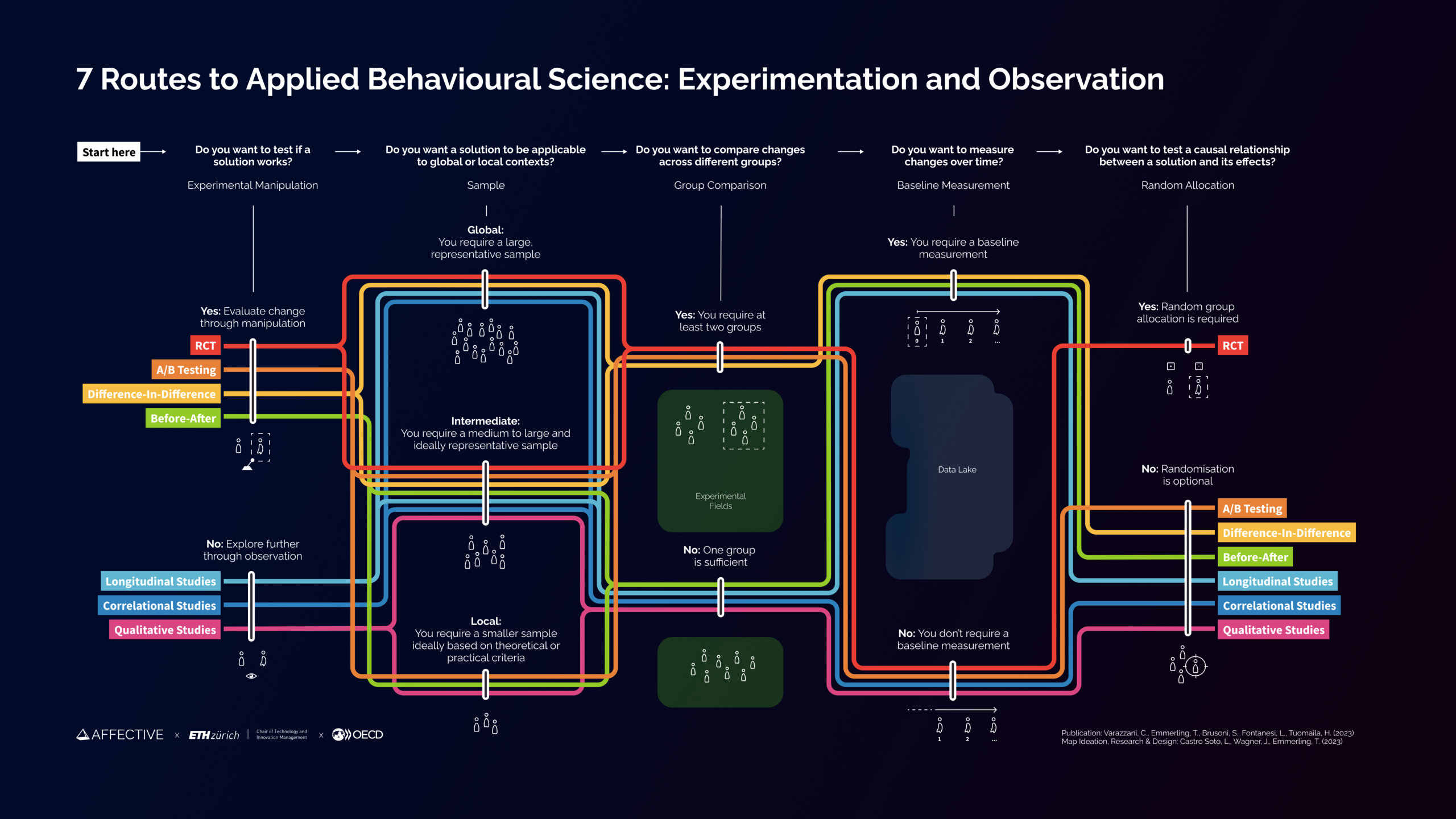OECD Resource: “…offers guidelines and a visual roadmap to help policymakers choose the most fit-for-purpose evidence collection method for their specific policy challenge.

The seven applied behavioural science methods:
- Randomised Controlled Trials (RCTs) are experiments that can demonstrate a causal relationship between an intervention and an outcome, by randomly assigning individuals to an intervention group and a control group.
- A/B testing tests two or more manipulations (such as variants of a webpage) to assess which performs better in terms of a specific goal or metric.
- Difference-in-Difference is an experimental method that estimates the causal effect of an intervention by comparing changes in outcomes between an intervention group and a control group before and after the intervention.
- Before-After studies assess the impact of an intervention or event by comparing outcomes or measurements before and after its occurrence, without a control group.
- Longitudinal studies collect data from the same individuals or groups over an extended period to assess trends over time.
- Correlational studies help to investigate the relationship between two or more variables to determine if they vary together (without implying causation).
- Qualitative studies explore the underlying meanings and nuances of a phenomenon through interviews, focus group sessions, or other exploratory methods based on conversations and observations…(More)”.